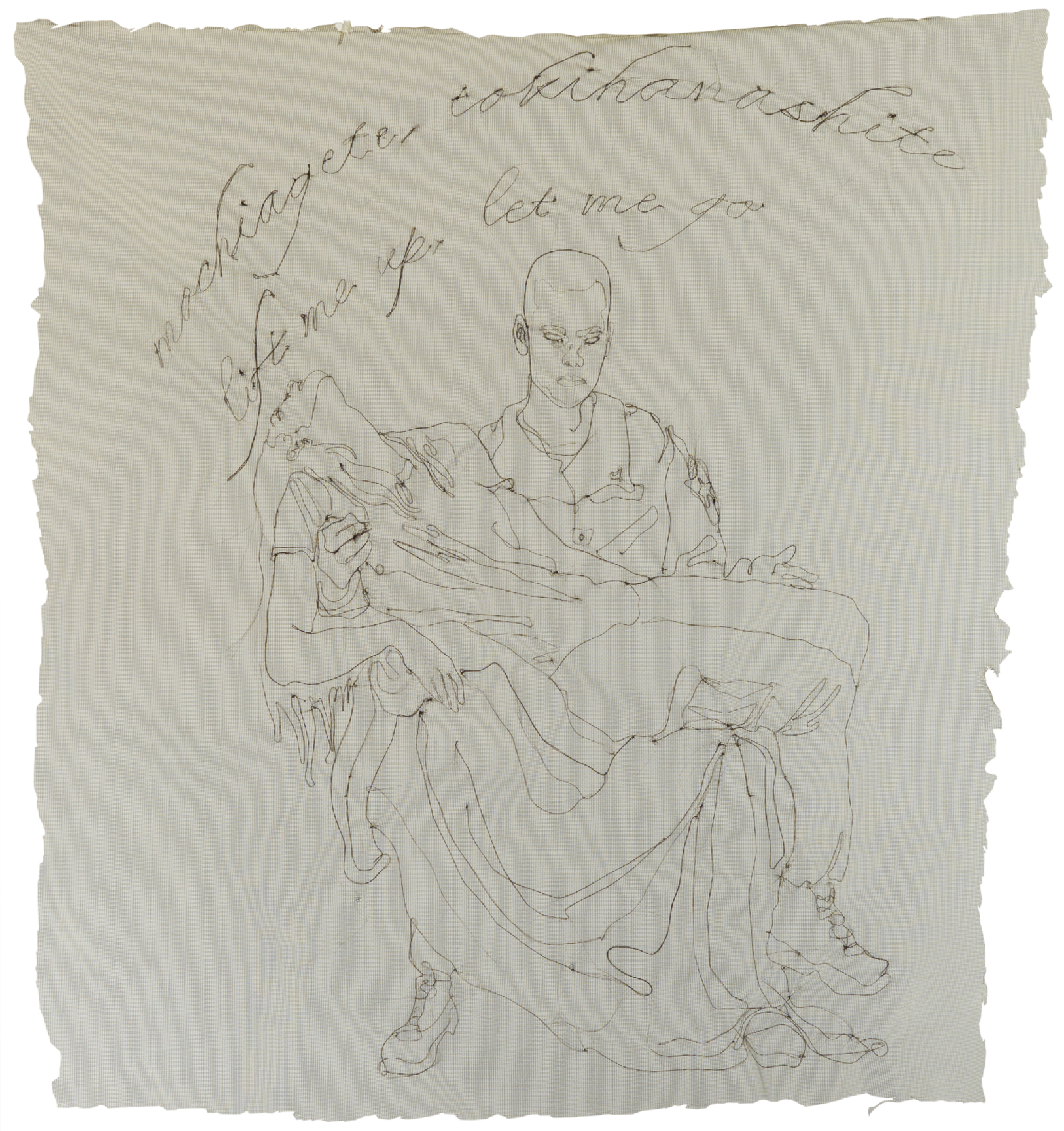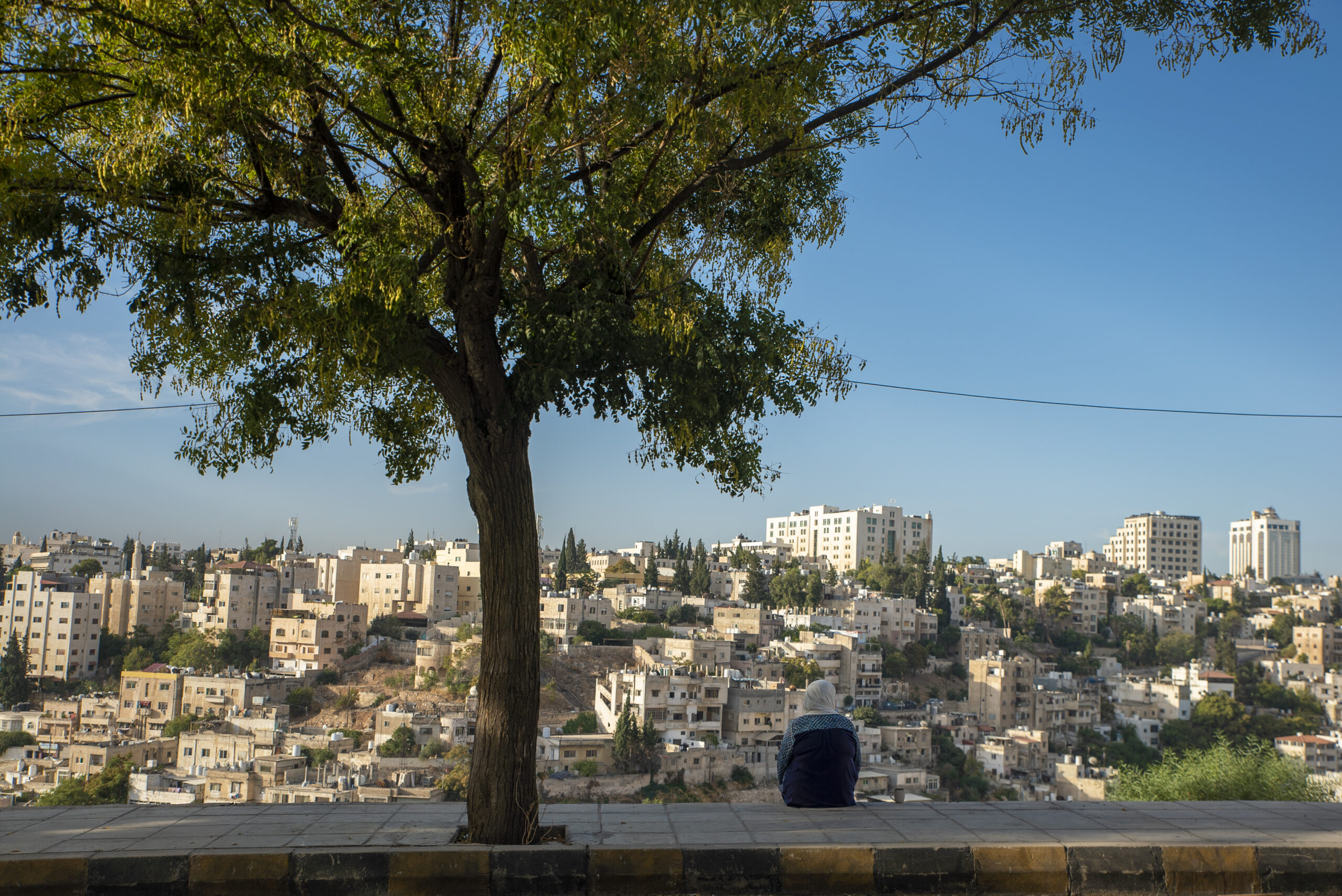Artist: TATIANA GARMENDIA
Curated by AMY SANDE-FRIEDMAN
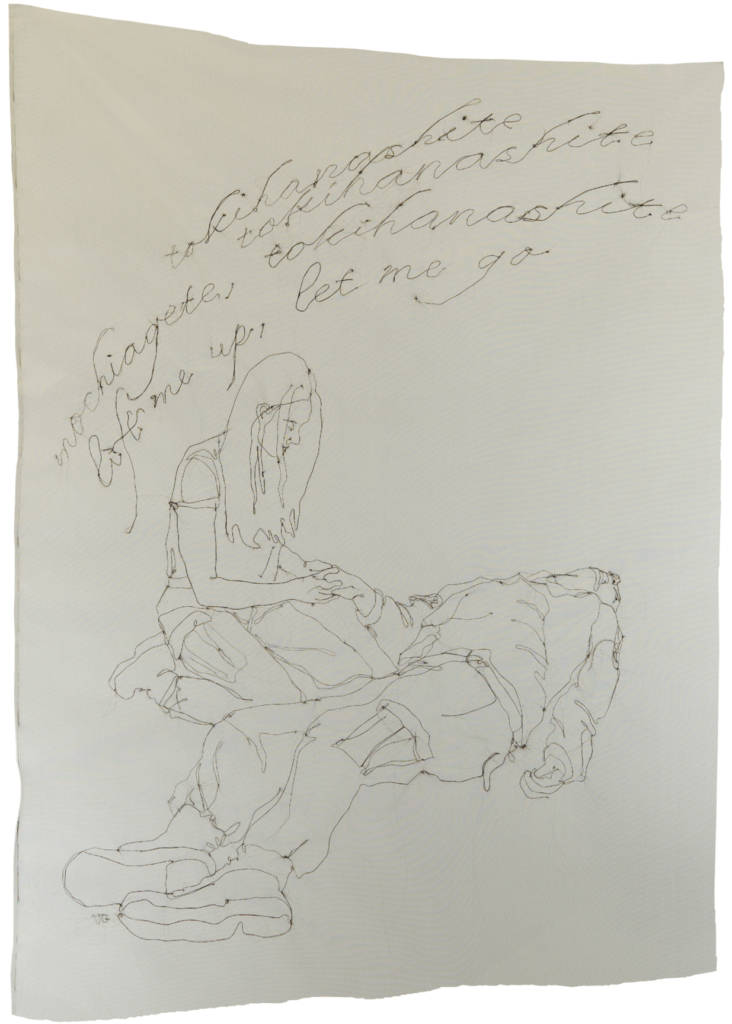 Tatiana Garmendia was inspired to create this series of work, which includes both embroideries stitched into military netting and drawings on paper, by a conversation she had with a veteran who had recently returned from serving in Iraq. Marrying poses from Michelangelo’s The Last Judgment, the altar fresco in the Sistine Chapel at the Vatican, with portraits of soldiers in contemporary military uniforms, she created scenes that refer both to the landscape of present day war and an artistic interpretation of heaven. For example, in Memorial Embroidery 4, Garmendia has transformed the outstretched arms of sky-born saints who are honoring Jesus into a cluster of supine soldiers, reaching out as if begging for help. In the works on paper, the clouds that populate Michelangelo’s fresco become the dust and debris of desert battle. Garmendia draws on the tradition of appropriating biblical or Ancient poses to honor heroic modern figures that was used by artists such as Benjamin West in paintings like Death of General Wolfe (1770). In the stitched pieces, Garmendia uses human hair, recalling a traditional practice in memorial embroidery. She takes the idea of incorporating personal physical tributes one step further by using tears in the embroidered compositions. These pieces honor soldiers, while presenting images that are also intensely personal and tragic.
Tatiana Garmendia was inspired to create this series of work, which includes both embroideries stitched into military netting and drawings on paper, by a conversation she had with a veteran who had recently returned from serving in Iraq. Marrying poses from Michelangelo’s The Last Judgment, the altar fresco in the Sistine Chapel at the Vatican, with portraits of soldiers in contemporary military uniforms, she created scenes that refer both to the landscape of present day war and an artistic interpretation of heaven. For example, in Memorial Embroidery 4, Garmendia has transformed the outstretched arms of sky-born saints who are honoring Jesus into a cluster of supine soldiers, reaching out as if begging for help. In the works on paper, the clouds that populate Michelangelo’s fresco become the dust and debris of desert battle. Garmendia draws on the tradition of appropriating biblical or Ancient poses to honor heroic modern figures that was used by artists such as Benjamin West in paintings like Death of General Wolfe (1770). In the stitched pieces, Garmendia uses human hair, recalling a traditional practice in memorial embroidery. She takes the idea of incorporating personal physical tributes one step further by using tears in the embroidered compositions. These pieces honor soldiers, while presenting images that are also intensely personal and tragic.
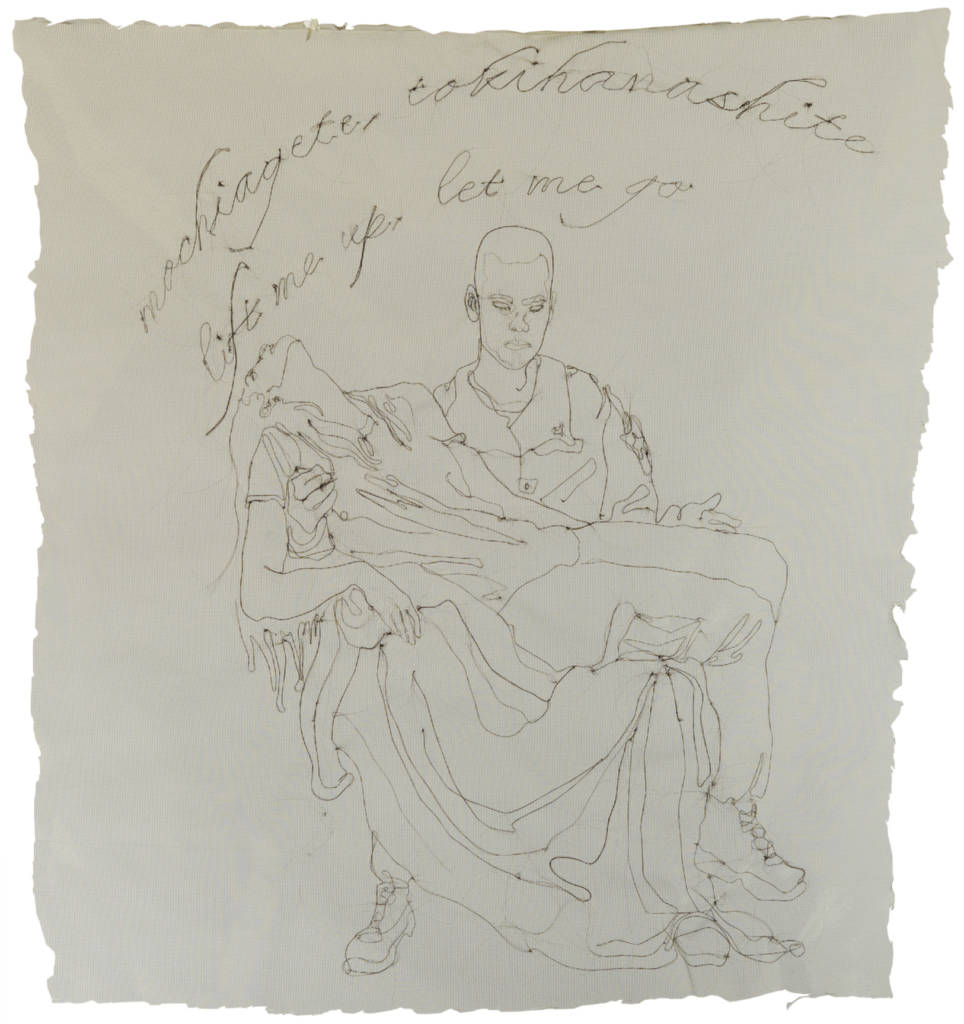
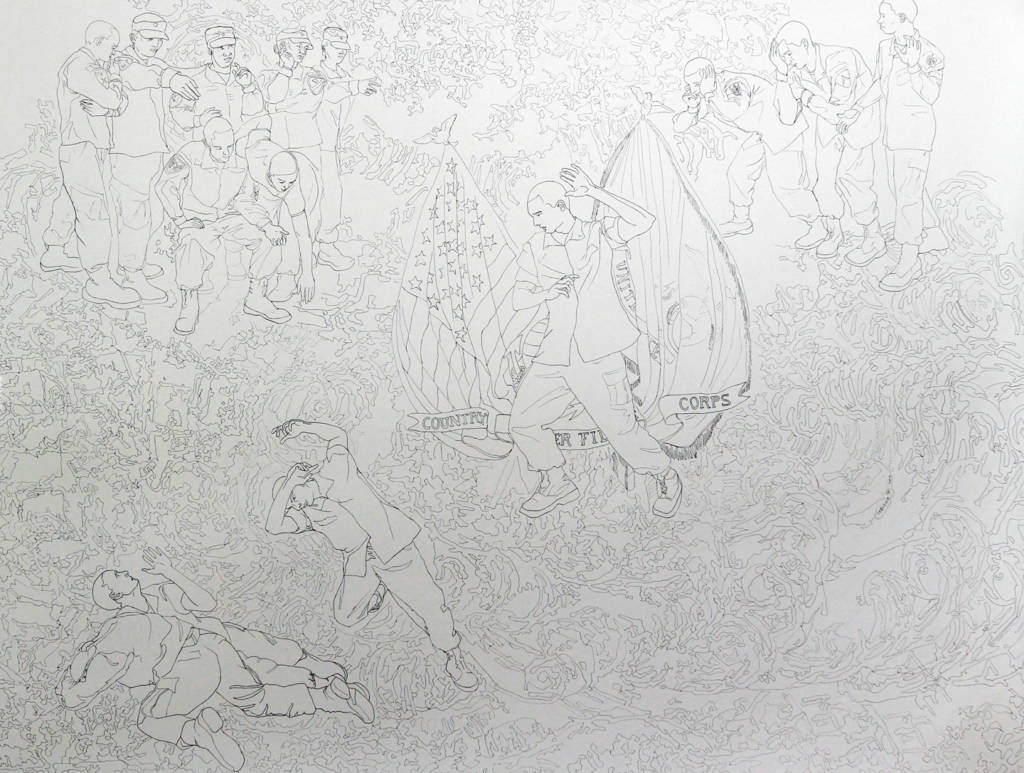
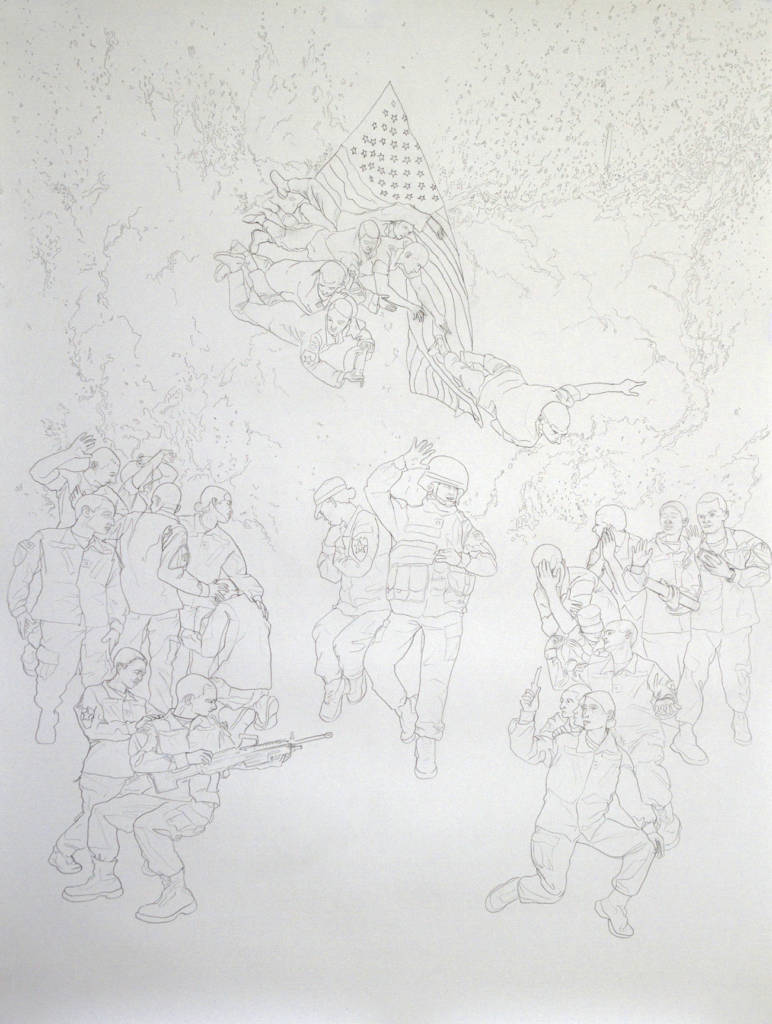
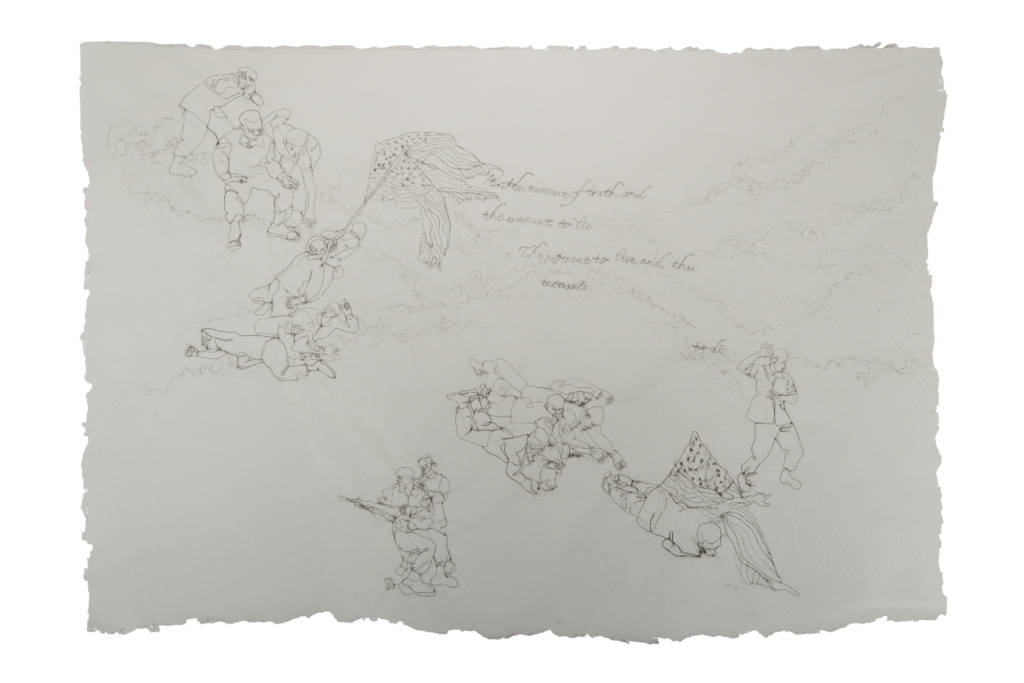

Tatiana Garmendia (b. 1961, Havana, Cuba) is based in Seattle, Washington.
